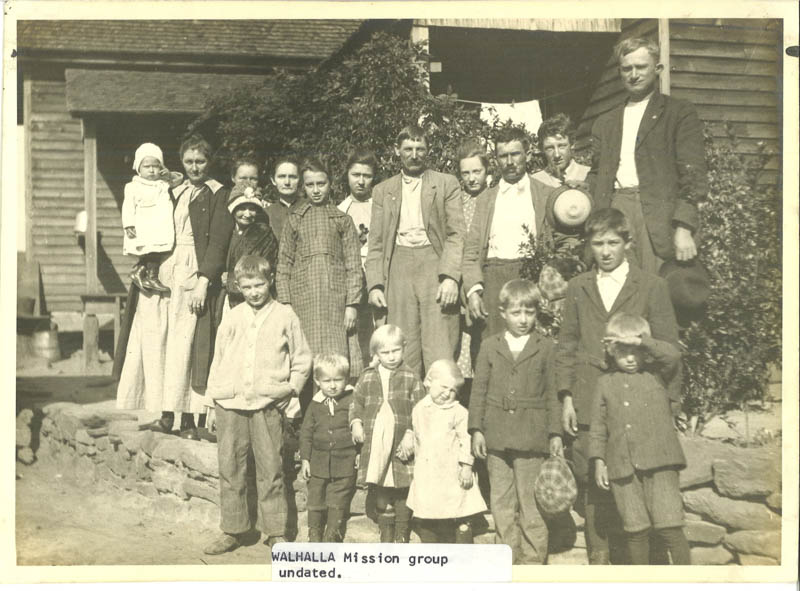
Editor’s Note: This is the second of two articles on the history of Irish immigrants in South Carolina. Read the first here.
Thousands of Irish immigrants have come to South Carolina since the first newcomers from that nation were documented in 1670. Among them, the Irish Catholics who started arriving in the 19th century have especially left their mark through the growth of the faith throughout the state.Their stories range from the difficult lives of miners in the mountains to Irish stonemasons, and merchants farmers who spread the faith to rural areas.
Stumphouse Mountain

Very few Catholics lived in the Upstate in the early 19th century until 600 laborers moved to the area to build the Blue Ridge Railroad in the 1850s, an ill-fated attempt to connect South Carolina and Tennessee for trade. The Irish worked to build a tunnel through Stumphouse Mountain near Walhalla in Oconee County.
As a result, a small town called Tunnel Hill sprang up nearby, and they worshipped in a church called St. Patrick, served by traveling priests. For a while, it was the largest Catholic congregation in the Upstate, but funding for the railroad dried up and the tunnel was abandoned.
The town and the church died, and today all that remains is a cemetery northwest of Walhalla.

Edgefield and Ward
The faith found a home in antebellum Edgefield County in the western part of the state through the efforts of Father Timothy Bermingham, a native of Ireland. In 1858, construction began on what would become the quietly dramatic structure of St. Mary of the Immaculate Conception Church on what is now Jeter Street. Father Bermingham used granite from local quarries and brought stonemasons from Ireland to help cut the stone for the church walls.

One of those masons was Jeremiah Donovan, who settled in a community called Mine Creek about 23 miles outside of Edgefield and later married a woman named Emeline Rodgers. He taught her the faith, brought in a priest to baptize her and later led other members of her family to convert.
Since there was no church in the rural community, for many years Donovan gathered the small group of Catholics together and they rode in a mule-drawn wagon on Saturdays to Edgefield, stayed the night, and then made the trip home after Sunday Mass.
Donovan longed for a church in the area around what eventually became the small town of Ward in Saluda County. He solicited donations from other congregations in the community and finally built a small wood-frame church on two acres of land that was originally known as St. Joseph. As the number of Catholics in the area grew, a larger church was built on a nearby site in the 1930s, and named St. William.
Today, St. William Church serves about 250 households, including a large Hispanic population. This new group of immigrants shares the parish with many people who are the descendants of the church’s original members. They worship together thanks to the long-ago vision of Jeremiah Donovan, who is buried in the cemetery located at the original site of the first church built in 1895.
The Irish of Blackville
Irish families including the Molonys, Quinns and Farrells were among the first to help build a church in the small Barnwell County town of Blackville. The original structure, St. Mathew, was built in 1859, but burned in 1878. A new church formed in the Gothic style, Sacred Heart, was built on the site and dedicated in 1898.
The congregation dwindled over the years, however, and it became a mission, then was permanently suppressed in 2014 by Bishop Robert E. Guglielmone because the building had fallen into serious disrepair. During its heyday, two Irish families were important members of Sacred Heart’s congregation and left their mark on the town.
Just before the Civil War, a man of Irish ancestry named Patrick Farrell came to South Carolina from New York. He fought for the South in the Civil War, then became a merchant and purchased large plots of land. Farrell and his son started several businesses, including the Shamrock Hotel, which for more than 50 years hosted travelers who came through what was once an active railroad line. Mr. Farrell sent to Ireland for a young man named O’Gorman to help him in business, and he ended up marrying Farrell’s daughter.
Descendants still live in the Farrell-O’Gorman House, a well-known Blackville landmark. South Carolina bishops stayed there so often that a group of rooms in the home is called the “Bishop’s Suite.”
Featured photo: Diocesan archives: Irish immigrants to the Upstate area were served by traveling priests and mission churches. For a time, they had their own church, St. Patrick in Tunnel Hill.

